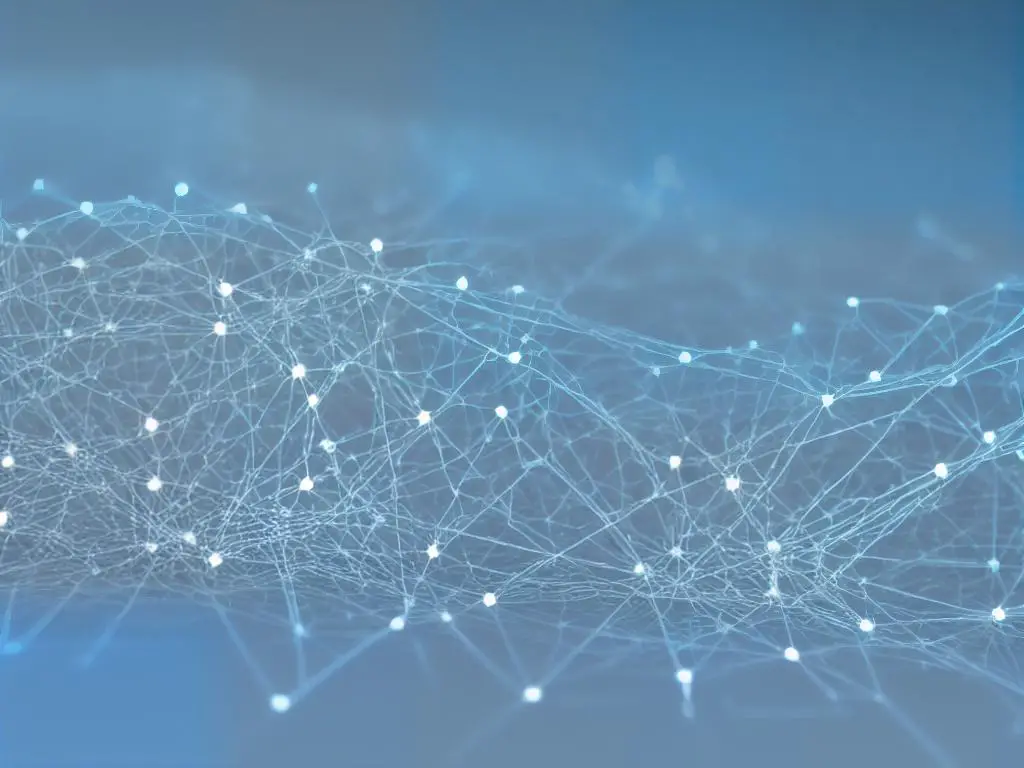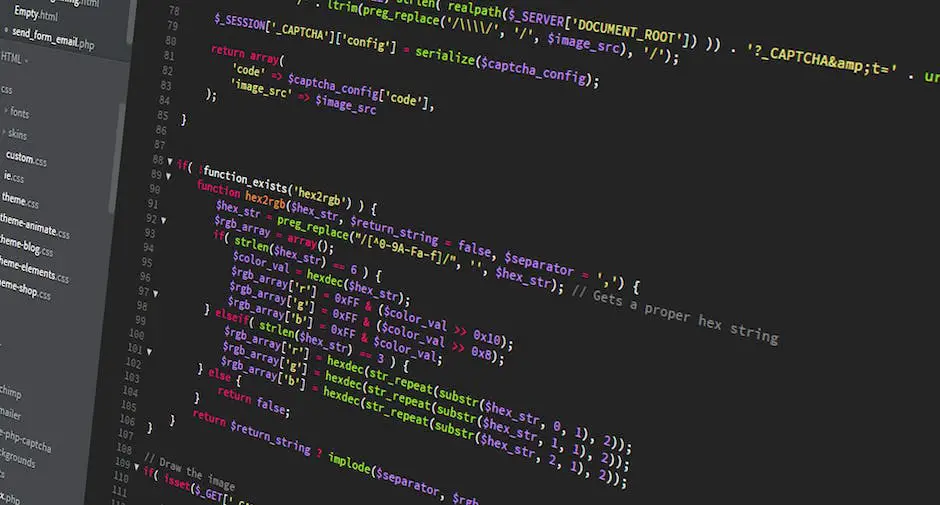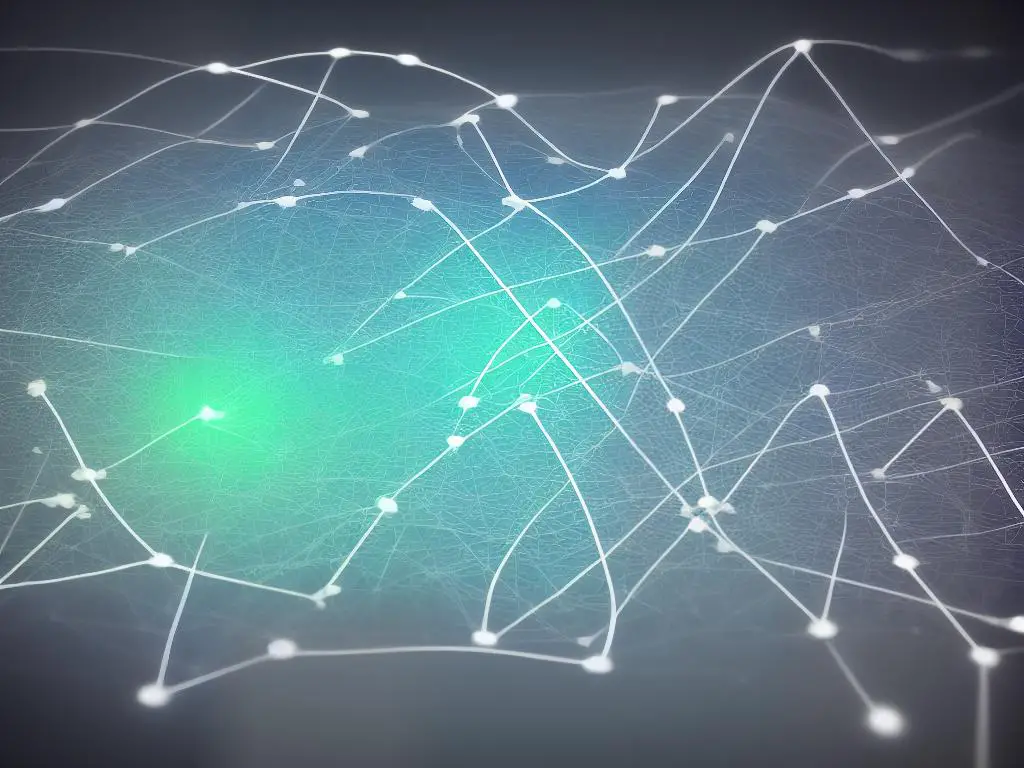Deep Learning Techniques have revolutionized the field of artificial intelligence, offering powerful and versatile techniques to tackle complex tasks, ranging from image recognition to natural language processing.
As the demand for skilled practitioners in this domain continues to soar, getting acquainted with deep learning techniques, architectures, and tools will empower enthusiasts and hobbyists to harness the potential of this technology and contribute to groundbreaking developments in various industries.
The aim of this essay is to provide a comprehensive understanding of the essential concepts and methods involved in deep learning, along with hands-on projects and tools to help readers bolster their skills and apply them in real-world scenarios.
Basics of Deep Learning
Table of Contents
Artificial neural networks (ANN) form the basis of deep learning techniques, designed to simulate the structure and function of the human brain. ANNs consist of interconnected nodes or neurons, structured into layers, including input, hidden, and output layers.
An input layer receives data from external sources, while hidden layers perform intermediate processing through a series of transformations. Finally, the output layer provides the ultimate prediction or classification of the given input. The connections between these nodes have associated weights that govern the strength of each connection, directly influencing the process of data transformation and the final output of the neural network.
Training data is essential to the development and refinement of deep learning models. Typically, this data is split into two subsets- a training set and a validation set. The training set is used to teach the model by adjusting its weights and biases to minimize prediction errors, while the validation set is leveraged to evaluate the model’s performance during the training process, ensuring that the model is not overfitting the training data.
Overfitting occurs when a model learns the training data too well, which may hamper its ability to generalize to new, unseen data. Therefore, the validation set serves to prevent overfitting and ensure that the model performs well across various data inputs.
Backpropagation, a supervised learning algorithm, plays a critical role in deep learning techniques by updating the model’s weights and biases to minimize errors. As the neural network processes input data, it initially produces a prediction based on its current weights and biases.
The prediction is then compared to the ground truth, and the resulting error is measured, typically using a loss function. Backpropagation aims to minimize the output error by calculating the gradient of the loss function with respect to each weight, essentially identifying how each weight should be adjusted to reduce the error.
This gradient is then propagated backward through the network, starting from the output layer to the input layer. During this process, each node’s weights are updated incrementally according to the calculated gradient, usually based on a learning rate that determines the magnitude of the changes applied.
The learning rate is an essential hyperparameter in deep learning as it dictates the speed of convergence to optimal weights; however, if the rate is too high or too low, it may lead to unstable convergence or slow training, respectively.
Convolutional Neural Networks (CNNs) and Recurrent Neural Networks (RNNs) are two distinct types of artificial neural networks that are extensively employed in deep learning applications. CNNs are highly effective in image processing, object recognition, and computer vision tasks due to their unique architecture, which includes convolutional and pooling layers that systematically process and condense spatial data.
In contrast, RNNs are adept at handling sequence-to-sequence learning tasks like natural language processing, speech recognition, and time series analysis, since they possess an inherent memory system that allows them to capture patterns and dependencies within sequential data.
Both CNNs and RNNs have greatly enhanced the capabilities of deep learning techniques, exhibiting remarkable performance and adaptability across diverse domains.

Activation Functions
As we delve further into deep learning techniques, it is essential to understand the role of activation functions. These critical components primarily determine the output of neurons for given input signals. The main objective of activation functions is to introduce non-linearity, which empowers the model to learn intricate patterns and adapt to various inputs.
Some of the most prevalent activation functions used in deep learning models include ReLU (Rectified Linear Unit), sigmoid, and softmax. Each of these functions boasts unique characteristics and strengths, contributing to the overall efficiency and versatility of deep learning techniques, particularly when working with CNNs and RNNs.
ReLU, or Rectified Linear Unit, is a popular and widely used activation function due to its simplicity and effectiveness in many applications. The ReLU function is defined as f(x) = max(0, x), meaning that if the input value is positive, it remains unchanged; otherwise, it is set to zero.
This activation function aids in mitigating the vanishing gradient problem, which is a major concern in training deep learning models with many layers. The vanishing gradient problem happens when gradients during backpropagation become smaller as they propagate through the layers, causing the weights to not get updated effectively. Moreover, the ReLU function is computationally efficient due to its simple operation.
Another common activation function is the sigmoid function, which is defined by the mathematical equation f(x) = 1 / (1 + exp(-x)). The sigmoid function is an S-shaped curve that maps any input value into the range of 0 to 1, making it especially suitable for tasks that require a probability output.
One significant advantage of the sigmoid function is that its output is always positive, thus ensuring that the gradient remains stable during the backpropagation process. However, the sigmoid function can suffer from the vanishing gradient problem, especially when dealing with a large number of layers, which may limit its application.
Softmax is yet another essential activation function used primarily in the output layer of deep learning models for multi-class classification problems. The softmax function calculates the probability distribution over multiple output classes, assigning a probability to each class so that the sum of probabilities for the given sample is one.
This function aids in converting the raw continuous output into meaningful class probabilities and is crucial when the model needs to make decisions among multiple classes. Since the softmax function also generates a differentiable output, it becomes seamless to update the model weights during the training process using gradient-based optimization methods.
An activation function is critical for transforming input signals and ensuring that deep learning models can learn complex patterns within the data. Factors such as problem type, convergence speed, and architectural complexity influence the choice of activation functions like ReLU, sigmoid, or softmax.
These activation functions work alongside other essential components, including layers, weights, and biases, to enable deep learning models to make accurate predictions, classify multiple outputs, and perform a wide range of tasks.

Convolutional Neural Networks (CNNs) in AgentGPT
One essential component of deep learning is Convolutional Neural Networks (CNNs), which play a vital role in solving image recognition and classification problems. CNNs are designed to automatically and adaptively learn spatial hierarchies of features directly from images, making them highly effective for handling high-dimensional data.
The architecture of a CNN comprises multiple layers such as convolutional layers, pooling layers, and fully connected layers, with each layer playing a crucial role in the learning process. These layers, coupled with suitable activation functions, make CNNs an invaluable tool in the field of deep learning.
Convolutional layers form the basis of a CNN’s architecture, mainly responsible for extracting features from the input images. These layers use a set of learnable filters, also known as convolutional kernels, to produce feature maps that capture the presence or absence of certain features in the input image.
These filters are convolved with the input data to form a dot product, resulting in the production of the feature map. Moreover, convolutional layers often employ activation functions like ReLU (Rectified Linear Unit) to introduce nonlinearity into the network, thus enabling the model to learn complex patterns within the data.
Pooling layers follow the convolutional layers in the CNN’s hierarchy and serve to reduce the spatial dimensions of the feature maps. This downsampling process not only helps to decrease the number of parameters in the network, thereby reducing computation time and resource requirements but also enhances the model’s ability to recognize features despite changes in scale or orientation.
There are different types of pooling, with the most commonly used technique being max-pooling, which selects the maximum value from a defined window in the feature map.
An essential aspect of CNNs is their ability to learn hierarchical feature representations, allowing them to recognize objects of varying complexities. As the network depth increases, the features extracted become more abstract and higher-level, enabling the network to detect objects at different levels of granularity.
Furthermore, CNNs effectively handle translational invariance by sharing weights and biases across the entire input image, a unique property that allows the model to recognize patterns and objects regardless of their position in the input.
In recent years, Convolutional Neural Networks (CNNs) have emerged as the go-to solution for a wide range of computer vision applications, such as object detection, facial recognition, and autonomous driving, among others. The ImageNet Large Scale Visual Recognition Challenge (ILSVRC) serves as a notable example of CNN-based models, which significantly advanced the state-of-the-art in image classification and object detection tasks.
Beyond computer vision, CNNs have found applications in natural language processing, audio processing, and recommender systems, showcasing the versatility and capability of this deep learning technique.

Recurrent Neural Networks (RNNs) in AgentGPT Environment
Complementing CNNs, Recurrent Neural Networks (RNNs) have emerged as a powerful tool in the field of deep learning, especially for processing sequential data. Unlike traditional feedforward networks, RNNs possess an internal memory structure that enables them to retain information from previous inputs and incorporate that context into decision-making processes.
This unique connectivity pattern allows RNNs to efficiently handle sequence-based data, such as time series and natural language. Consequently, RNNs have become an essential resource in areas such as speech recognition, language translation, and financial market predictions, further expanding the potential applications and impact of deep learning techniques.
One key aspect of RNNs is their ability to learn long-range dependencies from the input sequences, which is vital in numerous applications, especially natural language processing (NLP). However, RNNs tend to suffer from the so-called vanishing gradient problem, which causes difficulties in capturing dependencies spanning over long sequences. To address this challenge, researchers have developed variants of RNN architectures, such as Long Short-Term Memory (LSTM) and Gated Recurrent Units (GRU).
LSTM networks have been successful in improving RNNs by providing a more sophisticated memory mechanism. LSTMs, designed by Hochreiter and Schmidhuber in 1997, consist of special memory cells with explicit gating mechanisms that control information flow within the network.
These gates regulate when new data is added or removed, allowing the LSTM to maintain relevant information and discard distractions more effectively. Consequently, LSTMs can effectively learn dependencies across long time spans, making them incredibly useful for various sequential data applications like text and speech understanding.
GRU, another variant of RNN, was introduced by Cho et al. in 2014 as an alternative for LSTM. This model simplifies the LSTM architecture by condensing the gating mechanisms involved, leading to a less complex and computationally efficient design.
Similar to LSTM, GRUs are capable of retaining longer-term dependencies; however, they achieve this using fewer parameters, which can translate into a faster training process and reduced memory consumption. Empirical studies have shown that GRUs can provide comparable, and sometimes superior, performance to LSTMs in specific tasks such as language modeling and sentiment analysis.
Both LSTM and GRU represent significant advancements in the RNN domain and have been widely adopted in numerous deep learning applications involving sequential data. In recent years, derivative architectures have emerged, such as bidirectional LSTMs and attention-based mechanisms, aiming to further enhance the RNN’s ability to process sequences more effectively.
Research in this field continues, with the promising potential of grasping complex data patterns and creating powerful deep learning models to tackle a diverse range of problems.

Optimizers and Loss Functions
Optimizers and Their Role in Deep Learning
Optimizers play a crucial role in improving the performance of deep learning models by minimizing the loss function during the training process. Gradient descent, the most fundamental optimization algorithm, works by updating the model parameters iteratively to minimize the loss. It computes the gradients of the loss function with respect to the parameters and adjusts them in the direction of the negative gradient.
Gradient descent can be further divided into three types: Batch Gradient Descent, Stochastic Gradient Descent (SGD), and Mini-Batch Gradient Descent, each handling varying amounts of data when calculating gradients.
Another popular optimization algorithm is Adam, which combines the advantages of two other extensions of stochastic gradient descent – Adaptive Gradient Algorithm (AdaGrad) and Root Mean Square Propagation (RMSProp).
Adam computes adaptive learning rates for each parameter by using the first and second moments of the gradients. With its faster convergence compared to other optimizers, Adam has become a popular choice for training deep learning models.
Loss Functions
Loss functions play a crucial role in deep learning, as they measure the discrepancy between a model’s predicted output and the actual target. By minimizing the loss during training, a model hones its ability to make accurate predictions.
Mean Squared Error (MSE) is a common loss function often used in regression problems. It calculates the average of the squared differences between predicted and actual values, helping the model closely approximate target values. Cross-entropy is another popular loss function, typically applied in classification tasks. It measures the dissimilarity between the predicted probability distribution and the true distribution, with a focus on maximizing the likelihood of the correct class.
Binary classification utilizes Binary Cross-Entropy Loss, while multi-class classification relies on Categorical Cross-Entropy Loss. Huber loss, also known as smooth mean absolute error, is a robust regression loss function that manages outliers more effectively than MSE.
By incorporating properties of both mean squared error and mean absolute error and applying them based on a specified threshold, Huber loss allows the model to learn the main data pattern without being significantly affected by outliers.

Regularization Techniques
Regularization Techniques
Dropout is a commonly employed regularization technique in deep learning that helps prevent overfitting by randomly deactivating some neurons during the training process. During each training iteration, neurons are deactivated with a certain probability, compelling the model to become more robust and avoid reliance on any distinct neuron.
In turn, the network learns to extract more meaningful features by preventing over-reliance on individual neurons’ outputs, thereby improving generalization capabilities.
Another regularization technique employed in deep learning models is weight decay, also known as L1 or L2 regularization. Weight decay helps control the magnitude of the weights in a neural network by adding a penalty term to the loss function.
This penalty term is proportional to the sum of the absolute or squared values of the weights. By doing so, weight decay prevents the model from assigning too much importance to any single input feature and encourages the model to find an optimal balance of feature importance. This technique aims to minimize overfitting and leads to a model with better generalization capabilities.
Early stopping is another effective approach to mitigate overfitting in deep learning models. In this technique, the training process is intentionally halted before the model has a chance to overfit the data. To implement early stopping, performance on a validation set is monitored during the training. If the performance starts to degrade after a certain number of iterations, the training stops, and the model is considered optimal. As a result, early stopping helps to find the right balance between underfitting and overfitting, making the model a better fit to external data.
While dropout, weight decay, and early stopping have proven effective in reducing overfitting, an additional technique worth considering is data augmentation. Data augmentation increases the diversity of the training data by applying various transformations to the original data. Examples of data augmentation in image classification tasks include rotation, scaling, and flipping of images. By providing the model with more diverse data, the model learns to generalize better, thus improving its performance on unseen data.
Batch normalization is a critical technique that can help prevent overfitting and improve the training process in deep learning. By normalizing the inputs of each layer so their mean and variance remain consistent throughout the training, this method helps to address the issue of internal covariate shift. In turn, this leads to faster training and better generalization performance. Moreover, batch normalization serves as a regularizer, reducing the need for other regularization methods such as dropout and ultimately contributing to better model generalization.
Transfer Learning with AgentGPT
Another valuable technique in deep learning is transfer learning, which leverages pre-trained models to speed up learning and enhance performance on new tasks. The underlying concept of transfer learning is to use the knowledge gained from solving one problem as a foundation for learning to solve another, related problem. This becomes particularly useful when working with limited amounts of training data, as reusing pre-trained models can save time and computational resources compared to training a new model from scratch.
One approach to transfer learning is fine-tuning, which takes a pre-trained model and adjusts its parameters for the specific task at hand. Fine-tuning is done by initializing the model with the pre-trained weights and then training the model on the new task using a smaller learning rate.
This ensures that the previously learned features are preserved while allowing the model to adjust to the specifics of the new dataset. Fine-tuning can be applied to the entire model, or just to specific layers, depending on the problem and the desired level of customization.
Another approach to transfer learning is feature extraction, in which the higher-level features learned by the pre-trained model are used as input for a new model tailored to the target task. This often involves removing the output layer of the pre-trained model, leaving only the lower layers that capture abstract patterns in the data. The output from these lower layers is then used as input for a new classifier trained specifically for the new task. This method is particularly useful when the new task is very different from the original task, but still shares some of the underlying patterns.
In deep learning, transfer learning has been shown to be highly effective when the tasks share similar input structures, such as images or text. Convolutional neural networks (CNNs), for instance, have been successfully used to transfer knowledge between various image recognition tasks. In natural language processing, pre-trained models like BERT, GPT, and ELMo have greatly improved performance in a wide variety of text-based tasks, such as sentiment analysis and question-answering.
In conclusion, transfer learning is a powerful technique for leveraging pre-trained models to improve performance on new tasks in deep learning. By utilizing the fine-tuning and feature extraction approaches, enthusiasts and hobbyists can significantly reduce the time and resources required to develop high-performing models, particularly when faced with limited training data.
Transfer learning enables the effective reuse of prior knowledge, allowing for the development of advanced models that can tackle increasingly complex problems across a broad range of domains.

Model Evaluation Metrics
As enthusiasts and hobbyists learn to apply deep learning techniques, it becomes essential to evaluate and determine the performance of the models created. Model evaluation metrics, such as accuracy, precision, recall, and F1-score, play a crucial role in this process.
They help in quantifying the efficiency of a model, providing an essential indicator of how well a model would generalize to new data. Moreover, they guide the process of model selection and hyperparameter tuning. Understanding and utilizing these evaluation metrics is vital for choosing the best model to meet the specific needs of various applications in the fascinating field of deep learning.
Accuracy is one of the most straightforward evaluation metrics, measuring the proportion of correct predictions made by the model out of the total number of predictions. However, accuracy may not provide a reliable performance evaluation for imbalanced datasets or multi-class classification problems.
In such cases, it is essential to consider other evaluation metrics, like precision, recall, and F1-score, that provide further granularity on the model’s ability to distinguish between different classes in the dataset.
Precision measures the ratio of true positives to the sum of true positives and false positives, quantifying the model’s ability to correctly classify positive instances among all predicted positives. In other words, it indicates the percentage of relevant results the model provided.
Recall, on the other hand, calculates the ratio of true positives to the sum of true positives and false negatives. It assesses the model’s ability to recognize all actual positive instances in the dataset. While precision aims to maximize the model’s prediction accuracy, recall focuses on minimizing the likelihood of false negatives.
The F1-score is a metric that combines precision and recall into a single value by calculating their harmonic mean. It is especially useful when dealing with imbalanced datasets since it takes both false positives and false negatives into account. F1-score is a way to balance precision and recall, providing a more informative evaluation of the model’s performance.
A high F1-score indicates that the model has a low rate of false positives and false negatives, achieving a good trade-off between precision and recall.
In addition to the evaluation metrics discussed above, other parameters, such as specificity, ROC-AUC, and mean average precision, can provide more insights into the model’s performance across different thresholds. Furthermore, these metrics can be applied in various combinations, depending on the problem’s requirements and objectives.
Ultimately, selecting the appropriate evaluation metrics is crucial for enthusiasts and hobbyists interested in deep learning, as it helps better understand the strengths and weaknesses of a model and make informed decisions when choosing the best model suited for a specific application.
Hands-on Projects and Tools
One effective way for enthusiasts and hobbyists to become skilled in deep learning techniques is by working on hands-on projects using popular deep learning libraries such as TensorFlow, Keras, and PyTorch. Engaging in practical projects enables learners to gain a thorough understanding of the essential algorithms and models forming the foundation of deep learning.
Simultaneously, they can develop the problem-solving skills needed for real-life applications while applying the chosen evaluation metrics to assess their models’ performance, ensuring a smooth learning experience that builds both theoretical and applied knowledge.
A popular project in deep learning is image classification using Convolutional Neural Networks (CNNs). Beginners can start practicing with well-known datasets like CIFAR-10, a collection of 60,000 32×32 color images in 10 classes.
By employing libraries like TensorFlow, Keras, or PyTorch, learners can create their own image classification models and improve their understanding of how CNNs operate. This project allows users to practice image preprocessing, model creation, training, and validation to achieve higher classification accuracy.
Another interesting project for deep learning hobbyists is text generation using Recurrent Neural Networks (RNNs). This project provides insight into working with natural language processing (NLP) and helps learners understand how RNNs can be used to generate text by predicting the next word in a sequence.
Using open-source text datasets like Project Gutenberg or popular novels, enthusiasts can create a language model that generates coherent text sequences. Libraries like Keras or PyTorch offer built-in models and layers specifically designed for NLP tasks, making it easier for learners to experiment with different RNN architectures and techniques, such as Long Short Term Memory (LSTM) and Gated Recurrent Units (GRU).
Deep learning hobbyists can also delve into unsupervised learning techniques through projects involving autoencoders and deep belief networks. Autoencoders are powerful tools for dimensionality reduction, image noise reduction, and even generative modeling.
By implementing an autoencoder using TensorFlow or Keras, learners can gain an understanding of how these neural networks learn to encode and decode data without labeled examples. Deep belief networks, often used in feature learning and representation learning, provide another perspective on unsupervised learning techniques.
Building a deep belief network with libraries like PyTorch helps enthusiasts appreciate the intricacies of training unsupervised models.In the realm of reinforcement learning, projects involving deep Q-networks (DQNs) are particularly popular. Reinforcement learning teaches a model to make decisions based on the state of the environment while maximizing the reward function.
Building a DQN with TensorFlow or PyTorch can help hobbyists learn how neural networks can be used for tasks such as game playing, robotic control, and even portfolio management. A popular deep learning project employing DQNs is solving the OpenAI Gym’s “CartPole” environment, where a model learns to balance a pole on a moving cart.
This project exposes enthusiasts to various reinforcement learning concepts, such as exploration and exploitation, the Q-learning algorithm, and the role of the replay buffer.

By delving into the fundamental concepts, architectures, and techniques presented in this essay, readers will develop a solid foundation in deep learning and be well-equipped to embark on exciting projects that push the boundaries of artificial intelligence capabilities.
With continued practice and exposure to various tools, such as TensorFlow, Keras, and PyTorch, enthusiasts will enhance their skills in building powerful deep learning models tailored for different tasks and industries.
Ultimately, a strong grasp of deep learning techniques, model evaluation metrics, and approaches like transfer learning will not only enable individuals to create impactful solutions but also drive forth innovation, transforming the field for years to come.

I’m Dave, a passionate advocate and follower of all things AI. I am captivated by the marvels of artificial intelligence and how it continues to revolutionize our world every single day.
My fascination extends across the entire AI spectrum, but I have a special place in my heart for AgentGPT and AutoGPT. I am consistently amazed by the power and versatility of these tools, and I believe they hold the key to transforming how we interact with information and each other.
As I continue my journey in the vast world of AI, I look forward to exploring the ever-evolving capabilities of these technologies and sharing my insights and learnings with all of you. So let’s dive deep into the realm of AI together, and discover the limitless possibilities it offers!
Interests: Artificial Intelligence, AgentGPT, AutoGPT, Machine Learning, Natural Language Processing, Deep Learning, Conversational AI.

